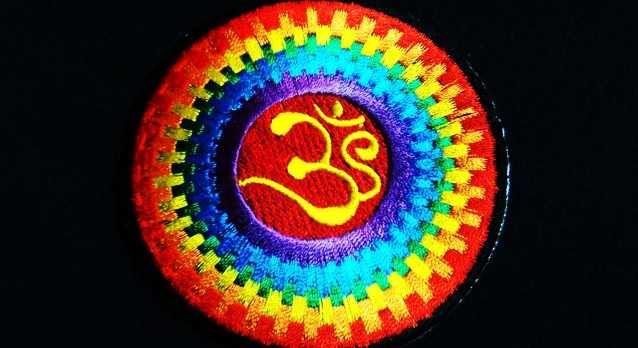No products in the cart.
A religion as intricate, complex and long lasting as Hinduism is surely filled with symbols and beliefs that have penetrated through the sands of time. Several symbols, marks and ideals could have been lost over course of time. But till today there are a few Hindu symbols that are exclusive to this incredible religion. One of the most widely used and easily recognized symbols in Hinduism is Om or Aum. Om is referred to as the pranava mantra, the one which pervades through life and is present in our breath and soul. It represents the supreme force in this universe which is supposed to be omnipotent. One can often see Om scribbled on the top of books, letters, and examination sheets. This helps us understand the kind of reverence and respect that Hindus associate with the symbol Om. Right from the time a child is born, the symbol om is written on the child‘s tongue with honey, even today it is popular expression of Hinduism frequently seen everywhere from temples and shrines to body art and tattoos. It consists of the letters aa au um which resonate throughout the body bringing about a resonating effect and penetrates to the core of the body.
“The imperishable sound
is the seed of all that exists.
The past, the present, the future.
– all are but the unfolding of OM.
And whatever transcends the three realms of time.
That indeed is the flowering of OM.”
There is another symbol which is of great cultural importance to us. “adithi dhevo bhava” is one of the basis of the Hindu households. We greet even strangers when they come to our house. We don’t wish any evil for our enemies. From this culture, we have derived the practice of greeting people.
People greet each other by placing their two hands together and slightly bowing the head, whilst saying Namaste or a similar phrase. They adopt the same posture when greeting the temple deity or a holy person. Thus when greeting another person, a Hindu is offering respect to the soul within (atman) and also to God within the heart (Paramatman).
There are a few physical, marks of Hinduism that can be seen across the Hindu society. The vibhuti or the sacred ash is smeared across the forehead. Usually three horizontal lines across the forehead, this is worn by shaivites (devotees of lord Shiva) while vaishnavites prefer a “u” shaped symbol. Every time a person smears vibhuti on his forehead he is reminded of the fact that everything in life is temporary. We are born out of ash and we go back to the ash. Everything else is just an illusion. A simple act like applying vibhuti has such philosophical significance in Hinduism. That is what makes our religion so intricately beautiful. Nothing in Hinduism is blind beliefs or superstitions; there are strong fundamentals of science, rationality and superstition behind every action in our religion.
As already seen in previous articles, the lingam is a symbol of lord Shiva depicted in the form of phallus. It signifies the union of the male and female forces of energy. shakthi which is the dynamic cosmic energy in and around us and the static absolute energy Shiva come together to make our world that we live in. To a devotee of Shiva, the linga appears like a row of flames. The linga is used as an symbol for concentration and focus of the mind. That is why throughout the country rishis and great seers instructed lingas to be placed in temples. Even ravana and lord rama is said to have worshipped linga to be victorious in battle.
The conch or the shanka is also an inevitable symbol in Hinduism, which is blown at certain significant events. the conch is blown by warriors and kings to announce the commencement and end of battles. Most of us are familiar with the practice of blowing the conch in funerals. This surely signifies something. The God of Preservation, Vishnu, is said to hold a special conch, Panchajanya, which represents life as it has come out of life-giving waters.
The swastika symbol has been replicated and used by people all over the world. Famous dictator Hitler used this symbol on his flag and in all his events. Swastika is supposed to be a symbol of the Aryan race according to Hitler. It can be seen on the sides of temples, religious scriptures, gift items, and letterheads. The Hindu deity Ganesh is often shown sitting on a lotus flower on a bed of swastikas.
The most important identity of Hindus, especially women in Hinduism is the bindhi. Nowadays it has become more of a decorative act rather than a traditional mark. The area between the eyebrows (where the bindi is placed) is said to be the sixth chakra, ajna, the seat of “concealed wisdom”. According to followers of Hinduism, this chakra is the exit point for kundalini energy. The bindi is said to retain energy and strengthen concentration. It is also said to protect against demons or bad luck.
In Hinduism the lotus is a symbol of the sun and of creation, and of perfection and purity, because its flowers grow on long stalks high above the water, whilst its roots remain in the mud. Even Brahma the creator of the world is depicted as sitting on a lotus. The goddess of education Saraswathi also is depicted as seated on a lotus with her veena.
The symbols in Hinduism are manifold. Any religion that has survived for this long has to have rich visual component that symbolizes its ideals and principles in a simplistic manner. This is the reason why Hinduism is appealing to a lot of people. Its strong rational basis and scientific backing makes it a religion for even the generations to come.






